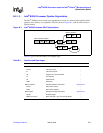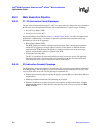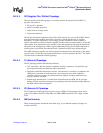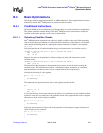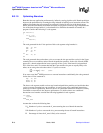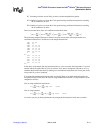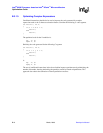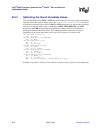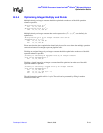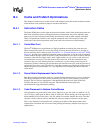
Developer’s Manual March, 2003 B-11
Intel
®
80200 Processor based on Intel
®
XScale
™
Microarchitecture
Optimization Guide
P2 Percentage of times we are likely to incur a branch misprediction penalty
N1
C
Number of cycles to execute the if-else portion using conditional instructions assuming
the if-condition to be true
N2
C
Number of cycles to execute the if-else portion using conditional instructions assuming
the if-condition to be false
Once we have the above data, use conditional instructions when:
The following example illustrates a situation in which we are better off using branches over
conditional instructions. Consider the code sample shown below:
cmp r0, #0
bne L1
add r0, r0, #1
add r1, r1, #1
add r2, r2, #1
add r3, r3, #1
add r4, r4, #1
b L2
L1:
sub r0, r0, #1
sub r1, r1, #1
sub r2, r2, #1
sub r3, r3, #1
sub r4, r4, #1
L2:
In the above code sample, the cmp instruction takes 1 cycle to execute, the if-part takes 7 cycles to
execute and the else-part takes 6 cycles to execute. If we were to change the code above so as to
eliminate the branch instructions by making use of conditional instructions, the if-else part would
always take 10 cycles to complete.
If we make the assumptions that both paths are equally likely to be taken and that branches are
mis-predicted 50% of the time, the costs of using conditional execution Vs using branches can be
computed as follows:
Cost of using conditional instructions:
Cost of using branches:
As can be seen, we get better performance by using branch instructions in the above scenario.
N1
C
P1
100
---------
×
N2
C
100 P1–
100
----------------------
×
N1
B
P1
100
---------
×
N2
B
100 P1–
100
----------------------
×
P2
100
---------
4×
++≤+
1
50
100
---------
10×
50
100
---------
10×
++ 11= cycles
1
50
100
---------
7×
50
100
---------
6×
50
100
---------
4×
+++ 9.5= cycles



